Page Content
- What is Perfume?
- Concentration/Dilution
- Family Groups
- The Notes of the Scent
- The Origin/Source of Essential Oils
- How Perfume is Made
- Preserving Perfume
- Perfume and Allergies
What is Perfume?
Perfume is a man made product that is composed of many different components, sometimes even hundreds, which produce a pleasant smell whenever their odor molecules float in the air.
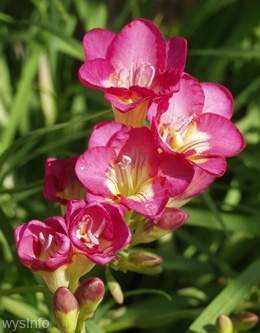
Freesias
Young woman spraying perfume on wrist
There are different types of perfume that are manufactured by different companies, each keeping the formula of their product a secret.
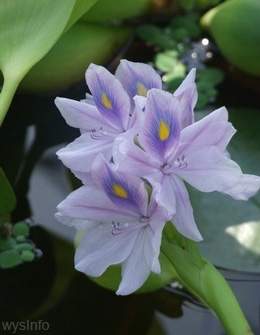
Hyacinthus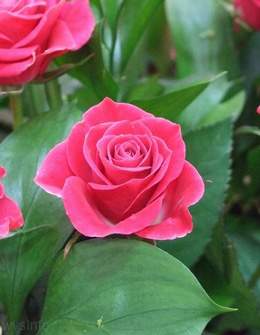
Pink Roses
Basic classification of perfume is done using 3 main categories:
- The concentration/dilution level of the essential oils
- The family to which it belongs
- The notes of the scent
Concentration/Dilution
Since essential oils are by nature incredibly concentrated, extremely toxic and should not be consumed, inhaled or come in contact with skin, the mixture of essential oils is diluted with alcohol and/or with other neutral odor sources like water, coconut oil, wax or extracts of jojoba. This is also done to cut the intensity of the scent.
This is also done to cut the intensity of the scent.
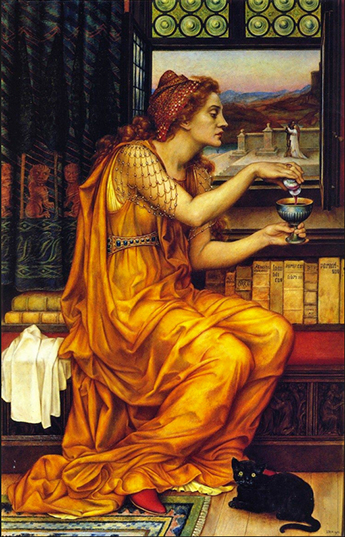
The love potion – Evelyn de Morgan 
Medea – Evelyn de Morgan
Family Groups
There are a few ways of grouping families of scents.
The following grouping is based on the French perfume committee classification:
- Citrus: obtained from fruit by cold pressing (bergamot, lemon, orange…).
- Floral citrus
- Chypre citrus
- Spicy citrus
- Woody citrus
- Aromatic citrus
- Fougere: (lavender, oak, moss, coumarin, bergamot, geranium…).
- Sweet amber fern
- Floral amber fern
- Spicy fern
- Aromatic fern
- Chypre: Cypress in French, (oak moss, ciste labdanum, patchouli, bergamot, rose…).
- Floral aldehydic
- Floral chypre
- Friuty chypre
- Green chypre
- Aromatic chypre
- Chypre leather
- Woody: (sandalwood, Patchouli, cedar, vetyver) with lavender and citrus notes.
- Woody citrus conifer
- Woody aromatic
- Spicy woody
- Woody spicy leather
- Amber: previously called “Oriental”, a soft scent (vanilla, ciste-labdanum).
- Woody floral amber
- Spicy floral amber
- Citrus amber
- Semi-amber floral
- Leather: an attempt to reproduce the scent of leather with dry notes (burnt wood, smoke, tobacco, birch) together with slightly floral scents.
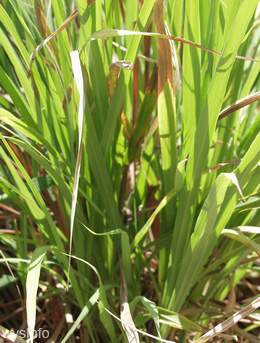
Lemon grass cymbopogon citratus – citrus family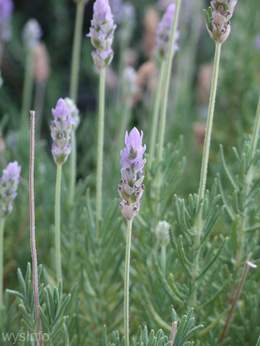
Lavender – fougere family
Another way of grouping the scents was made in 1983 (by Michael Edwards, a consultant in the perfume industry):
- Floral
- Floral
- Soft Floral
- Floral Oriental
- Oriental
- Soft Oriental
- Oriental
- Woody Oriental
- Woody
- Wood
- Mossy Woods
- Dry Woods
- Fresh
- Citrus
- Green
- Water
- Fougère
- Elements from each of the other four groups – this family contains the largest variety of scents since it made up of combinations of elements from the other groups.
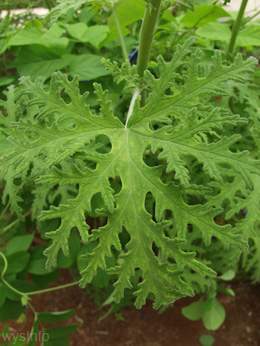
Pelargonium radens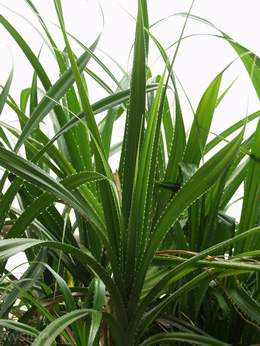
Pandanus tectorius
Pelargonium radens – perfume component South Africa
Pandanus tectorius – perfume oil extracted from floral bracts – Pacific Islands and Australia
With time, more sub groups are being added in order to accommodate the different types of scents that are discovered and developed due to the advances in the technology of the perfume industry.
The Notes of the Scent
Perfumes are typically manufactured to unfold, over time. They are formulated based on 3 ‘Notes’ – Top Notes, Middle Notes and Base Notes. Each of these notes represents a different group of scents within the perfume’s fragrance. The fragrance gradually develops over time as a new note takes over from the previous note.
- Top notes – Give us the first immediate impression of the fragrance. They are usually strong, sharp scents. These scents are made of light molecules and generally last a matter of 10-30 minutes before they evaporate.
- Middle notes – Are noticed as the top notes evaporate. They are more rounded, mellow scents. They usually appear some 10-45 minutes after applying the perfume and last longer than the top notes.
- Base notes – Are noticed just before the middle notes fade. They consist of large and heavier scent molecules that evaporate slowly and can be detected even after 24 hours.
The middle and base notes are the two that are at the core of the perfume’s fragrance.
The Origin/Source of Essential Oils
Plants, animals and synthetic aromatic compounds make up the source ingredients for the perfume industry.
- Plants – Plants have been the earliest and the main source of aromatic compounds in perfume production, primarily because of their relative ease of accessibility, and the great variety of odors among them.
The source of aromatic compounds can come from different parts of the plants. From flowers like the rose and jasmine, from resin like frankincense, myrrh and pine, from bulbs like those of the iris plant, from bark like cinnamon, from seeds like Tonka bean, coriander, anise and others, or from the root like orrisroot. Some commonly used leaves and twigs are lavender, sage and rosemary. Cloves are an example of a flower (in bud form) that is valued.
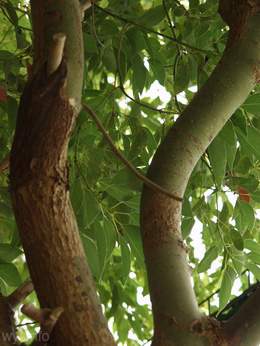
Cinnamon Tree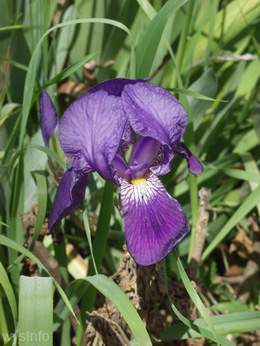
Iris germanica
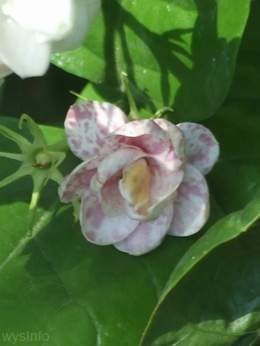
Jasminum sambac Grand Duke of Tuscany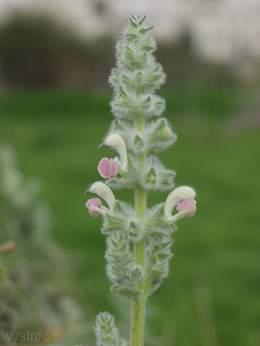
Sage salvia dominica
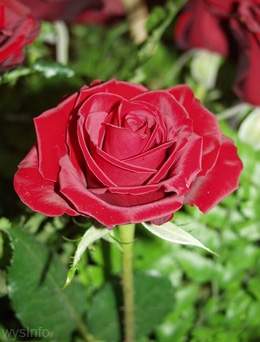
Red Rose 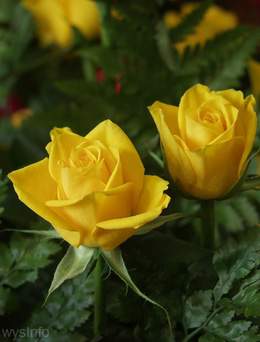
Yellow Rose
Many fruits that elicit enticing odors, such as cherries and strawberries, are surprisingly not used in the production of perfumes. Whenever these fragrances are achieved they are the result of synthetic compounds. On the other hand, the leaves and rind of the fruit of citrus plants are often used in the perfume industry.
Some plants have been more difficult to find or to grow. Plants like myrrh and frankincense for example were grown, in the past, only in Somalia and Southern Arabia; persimmon was grown in Ein Gedi by the Dead Sea, some others like cinnamon were grown in Ceylon and south India, others in China. Together with the spices grown in the east, these rare plants triggered the establishment of the famous ‘Trade Route’, known also as the ‘Perfume Route’ or ‘Incense Route’.
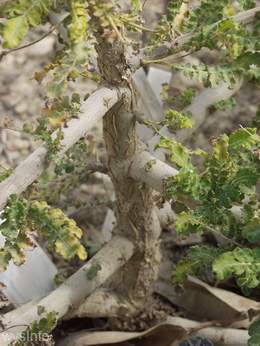
Frankincense tree boswellia sacra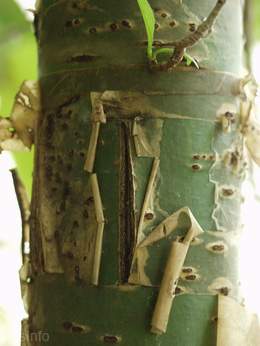
Myrrh stem commiphora abyssinica
- Animals – Animal pheromones have been used in perfume production for a number of centuries. Perfumers have highly valued them for the affect they have on the perfume compounds, since they tend to heighten the intensity of the fragrance. Today, simulated animal pheromone extracts are synthetically created in order to protect endangered animals.
- Synthetic compounds – The use of synthetic aromatic ingredients for perfume production goes back as far as the end of the 19thcentury. The progress made in the research of organic chemistry made it possible to develop new aromatic compounds that replaced, in many cases, the more expensive and rare natural aromatic sources, thus, allowing the manufacture of perfume for more reasonable prices.
How Perfume is Made
Today, perfume is usually constructed from a mixture of essential oils and fragrances, combined with fixatives and solvents.
The essential oils contain the volatile fragrance of the component. It is incredibly concentrated oil which contains the distinctive aromatic properties of the plant, in a way, its essence. The oils are produced usually through distillation, expression or solvent extraction.
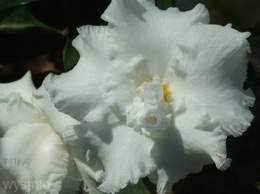
Tabernaemontana coronaria crepe jasmin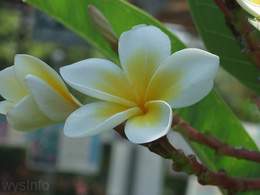
Plumeria rubra
There are different methods that are used in order to extract the aromatic compounds from the raw materials. The result is often somewhat different than the original odor since it is affected by the extracting process.
Extraction methods
Steam distillation: the fragrance is extracted by passing steam through the plants in a still or by boiling the plants, thus turning the oils to gas. These cool down as they go through the process and liquefy back to oil.
Solvent Extraction: the plants are put into a turning drum with benzene or petroleum ether which dissolves the plants and extracts the essential oils, leaving a waxy like substance. This substance is rinsed with ethanol that dissolves the oil. Once heated, the ethanol evaporates leaving the essential oil.
Enfleurage: plant substances are pressed on a greasy glass sheet with wooden frames. This is repeated until the fragrance is fully absorbed in the grease and later rinsed in alcohol.
Maceration: plant substances are pressed against a greasy glass sheet like in the enfleurage method, but in this method the grease is heated up in order to absorb the fragrance better.
Expression: the substances are pressed until the oil is extracted from them. This is the oldest technique used.
Other: fragrances are also extracted from animals like musk deer, sperm whales, beavers, and civet cats. These are used as fixatives to add to the perfume scent (although today most are produced synthetically). Fixatives are a form of substance that are added to the blend of perfume in order to let the fragrance dissolve slower than it would by itself.
Blending
After the oils are ready they are blended together according to specific instructions given by the ‘master perfumer’. This blend might consist of hundreds of different ingredients to create the specific scent that the master perfumer is after.
Dilution
The essential oils are diluted, usually with alcohol, water or other neutralizing substances, in order to reduce possible toxicity, and to cut the scent intensity.
There are a few levels of concentration/dilution:
- Perfume extract (Extrait): 20%-40% (IFRA: typical 25%) essential oils
- Eau de Parfum (EdP): 10-30% (typical ~15%) essential oils
- Eau de Toilette (EdT): 5-20% (typical ~10%) essential oils
- Eau de Cologne (EdC): 2-5% essential oils
Aging
Some perfumes, after being blended, are left to age for a period of time. They are released only by the master perfumer, after an inspection to determine whether the perfume reached the wanted scent.
Preserving Perfume
Perfume fragrance compounds will degrade faster when exposed to heat, light, oxygen or when they interact with extraneous organic materials.
An opened bottle will keep its aroma intact for up to a year, as long as it is full or nearly so. As the level goes down, the volume of air in the bottle increases and with it, the level of oxygen is raised. The oxygen in the bottle triggers a chemical reaction in the perfume fragrance compounds, eventually distorting them and altering the perfume’s smell.
Although it is not possible to completely remove oxygen from the headspace of a stored flask of fragrance, the use of spray dispensers instead of rollers and “classic” bottle caps will minimize oxygen exposure. Sprays also have the advantage of isolating fragrance inside a bottle and preventing it from mixing with dust, skin, and other components that exist in the air.
Perfumes are best preserved when kept in their original packaging when not in use, and refrigerated at a relatively low temperatures between 3-7 degrees Celsius.
Light has an aging affect on organic materials; it has a chemical affect on the perfume fragrance compounds and therefore the perfume is better kept in a dark place.
Fixatives are used to help preserve the perfume. They are defined, in perfume industry terms, to belong to the “base note”, reflecting their low volatility. A couple of examples of fixatives are musk (obtained from a gland of the male musk deer) and orris root (root of a kind of iris).
Perfume and Allergies
If you experience symptoms like runny nose, itchy eyes, wheezing, or coughing when using perfume or being around other people who use it, then chances are you are having a reaction.
Interestingly, many people have a perfume allergy but blame it on other things, never considering that fragrance could be the problem. Sometimes, even doctors miss a perfume allergy simply because they are more accustomed to treating seasonal allergies, food allergies, pet allergies, and other forms of allergy.
Research has shown that a significant percentage of people have an allergic reaction to one or more cosmetic product – for example aftershave for men, shampoo, sun screen, make up, moisturizer creams, materials for hair care, aromatic oils for body care and also perfume.
There are thousands of different cosmetic products. Even those that are supposed to meet the definition of “fragrance free” may contain components that neutralize the natural unpleasant odor of some of their base materials.
Practically all of these products, including the expensive range of perfumes, contain different degrees of preservatives and ingredients that protect them from bacteria and fungus, thus extending their shelf life. However some of the ingredients may contain a concentration of allergenic components that exceeds the perfume industry’s own guidelines for product safety.
How do we know what can cause a reaction?
The knowledge that we have of the allergenic properties of fragrances derives from experiments that are done on animals and men, as well as experience from many years of use. The majority of these studies have been conducted by the perfume and cosmetic manufacturers. Some of the results, understandably, were not published by them in order to avoid embarrassing information associated with their products.
The EU (European Union) Cosmetic Products Directive specifies upper limits for the concentration of allergenic ingredients and preservatives in cosmetics. Today, cosmetic products have to bear a content declaration. Unfortunately, though, the industry has managed to keep perfume excluded from the declaration requirement, with the argument that the risk of allergy from perfume is limited and that a declaration is not practical since perfumes are usually comprised of many different chemical substances.
Some common allergenic fragrances
Some of the common allergenic fragrances include chemicals such as amylcinnamic alcohol, anisyl alcohol, benzyl alcohol, benzyl salicylate, and natural products such as clove oil, nutmeg oil, odor of rose and cinnamon oil.
As a matter of fact, most basic components for perfumes are allergenic and toxic to one level or another. The trigger for the allergic reaction depends on their concentration in the products, on the amount of perfume that is used by the person, the intervals that it is being used and the specific individual sensitivity to the perfume ingredients.
The body’s reactions to allergens can vary from one person to another; it can appear in the form of migraines, nausea, fatigue, headaches, difficulty of breathing, hoarse voice or even loss of voice, tingling of the lips or skin, muscle and joint pain and even difficulty in concentrating. It can also develop skin rash or swelling on surfaces of hands, arms and face.
Formal diagnosis of allergy to odor related products, such as deodorants, can be done through tests like the patch test. Here a small adhesive strip containing a number of the most common allergens is applied to the skin and then left for the skin to react. If there are any allergens, the skin will respond by swelling or any other symptom, positively identifying the allergen. Other tests that identify allergies include skin prick tests, and a general blood test.
Allergy-triggering fragrances
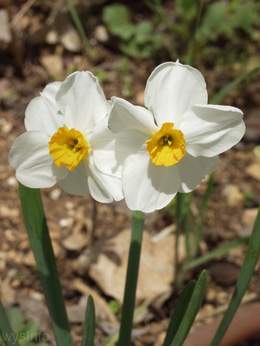
Daffodils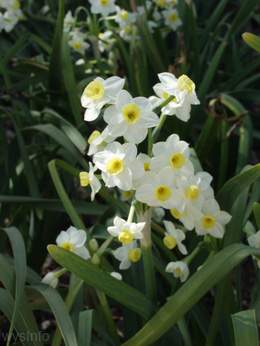
Daffodils
There is a fragrance mix, made up of 8 individual fragrances, that is used to screen for fragrance allergies. The 8 listed below are the most common allergy-trigger fragrances that are used in many products to enhance their fragrant and flavoring properties.
- Cinnamic aldehyde – a warm spicy odor with a taste of cinnamon and is usually extracted from cinnamon oil.
- Eugenol – a spicy odor of cloves with a pungent taste, found in oils of clove and cinnamon leaves, in roses, carnations, hyacinths and violets.
- Isoeugenol – a clove odor that is weaker than that of eugenol, found in nutmeg oil and ylang ylang oil.
- Geraniolm – a sweet floral odor of rose, found in rose and palmarose oil, geranium oil, lavender oil, jasmine oil and citronella oil. This fragrance is present in over 250 essential oils and is used in perfumes, colognes, facial make-up and skin care products.
- Alpha amyl cinnamic alcohol – an intense odor of jasmine from a synthetic essential oil.
- Hydroxycitronellal – a sweet odor of lily of the valley from a synthetic floral material.
- Oak moss absolute – an earthy, woody, masculine odor that is an essential extracted from tree lichen. This fragrance is used in colognes, aftershaves and scented products for men.
Various products may contain one or more of the different fragrances listed above. Some of these products are:
- Perfumes, cosmetics, deodorants, paper, laundry detergent products, toilet soap, personal hygiene products
- Flavoring in beverages (cola, bitters, Vermouth), chewing gums, toothpaste and mouthwash
- Flavoring in toothpaste, mouthwash and processed food
- Dental cement and packing agents, giving the characteristic odor of dental surgeries
- Insecticidal and fungicidal properties – used to preserve meats and other foods
- Pharmaceutical creams and lotions for its antiseptic properties
While not everyone is allergic to fragrances, people should be aware of the possibility of this type of allergy and should learn to choose products based on their body’s reactions.
***
You can find our videos on the Wysinfo Youtube channel.